Stucco, traditionally an exterior finish, has made its way indoors, bringing with it a unique blend of texture, character, and endless design possibilities. This versatile material can transform any interior space, adding depth and visual interest to your walls. In this comprehensive guide, we’ll explore 20 of the best stucco interior wall ideas that will inspire you to reimagine your living spaces.
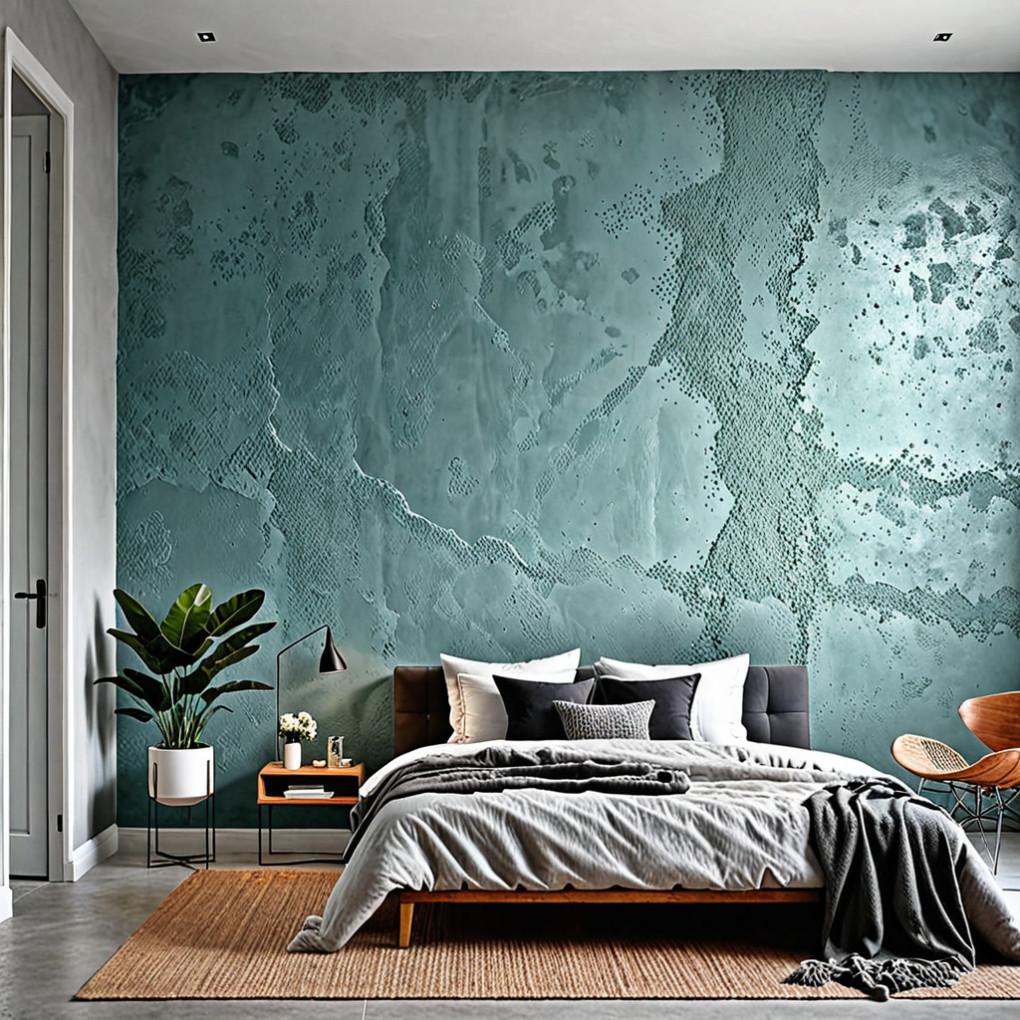
1. Classic Smooth Stucco
Smooth stucco offers a timeless elegance that can complement any interior design style. Its subtle texture provides just enough visual interest without overpowering the room.
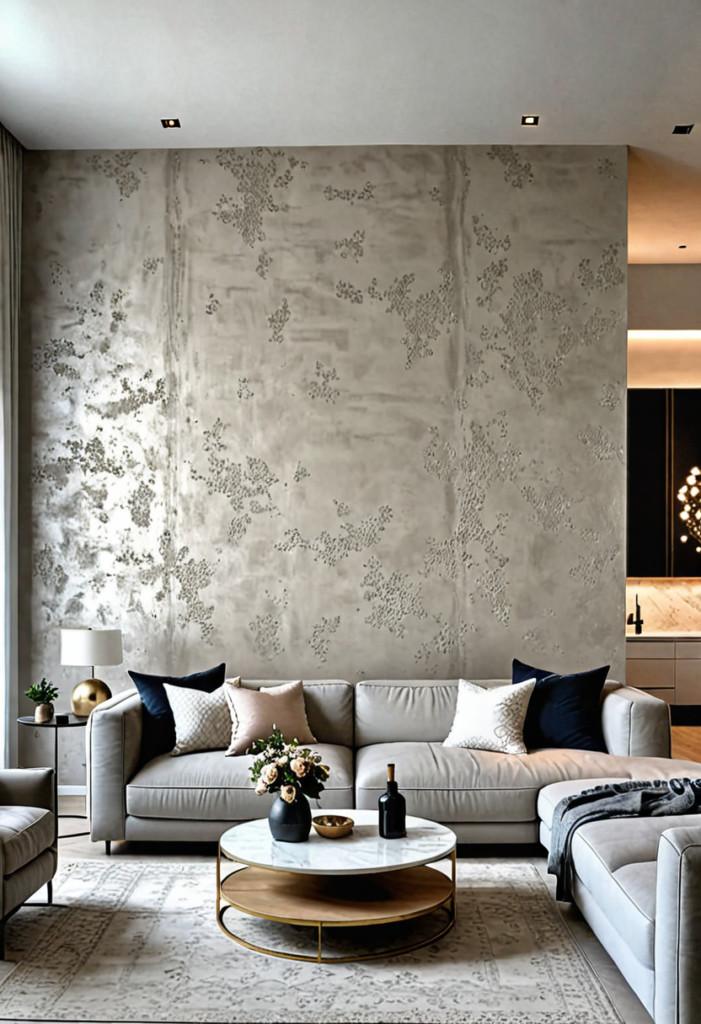
The beauty of smooth stucco lies in its simplicity. This finish creates a clean, modern look that serves as an excellent backdrop for artwork or statement furniture pieces. It’s particularly effective in minimalist or contemporary interiors where a sleek, uncluttered aesthetic is desired.
Pro Tip: To achieve the perfect smooth stucco finish, consider hiring a professional plasterer. Their expertise can ensure a flawless application that will stand the test of time.
2. Rustic Textured Stucco
For those seeking a more organic, earthy feel, rustic textured stucco is an excellent choice. This finish mimics the look of traditional hand-applied stucco, complete with subtle imperfections that add character to your space.
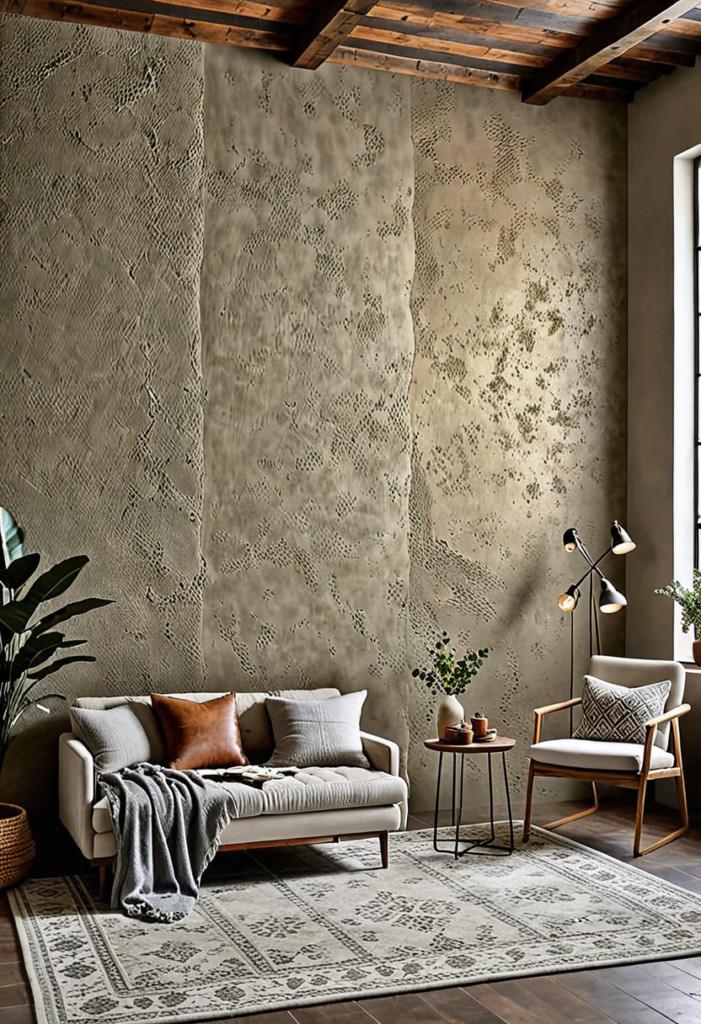
Rustic textured stucco works particularly well in Mediterranean, Spanish, or Tuscan-inspired interiors. It can create a warm, inviting atmosphere that feels both cozy and sophisticated. Pair it with wooden beams or wrought iron accents for an authentic Old World charm.
Pro Tip: Experiment with different application techniques to achieve varying degrees of texture. A trowel can create swirls or fan patterns, while a sponge can produce a more subtle, mottled effect.
3. Color-Washed Stucco
Colour-washing is a technique that involves applying a translucent glaze over a base coat of stucco, creating a soft, watercolour-like effect. This method adds depth and dimension to your walls while maintaining the textural appeal of stucco.
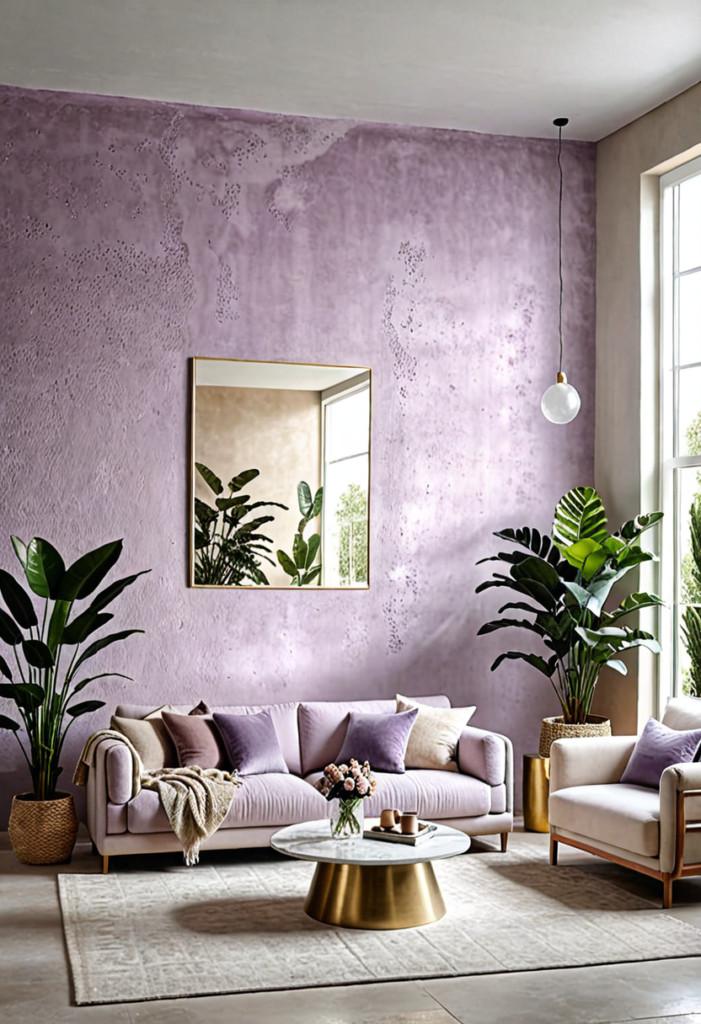
The color-wash technique allows for endless creativity. You can opt for subtle tone-on-tone effects or create more dramatic contrasts. This finish is particularly effective in spaces where you want to add a touch of elegance without overwhelming the room.
Pro Tip: For best results, apply the colour wash in thin, overlapping layers. This will give you more control over the final look and allow you to build up the colour gradually.
4. Venetian Plaster Stucco
Venetian plaster is a highly polished stucco finish that mimics the look of marble. This luxurious technique dates back to ancient Rome and has been used in palaces and grand buildings for centuries.
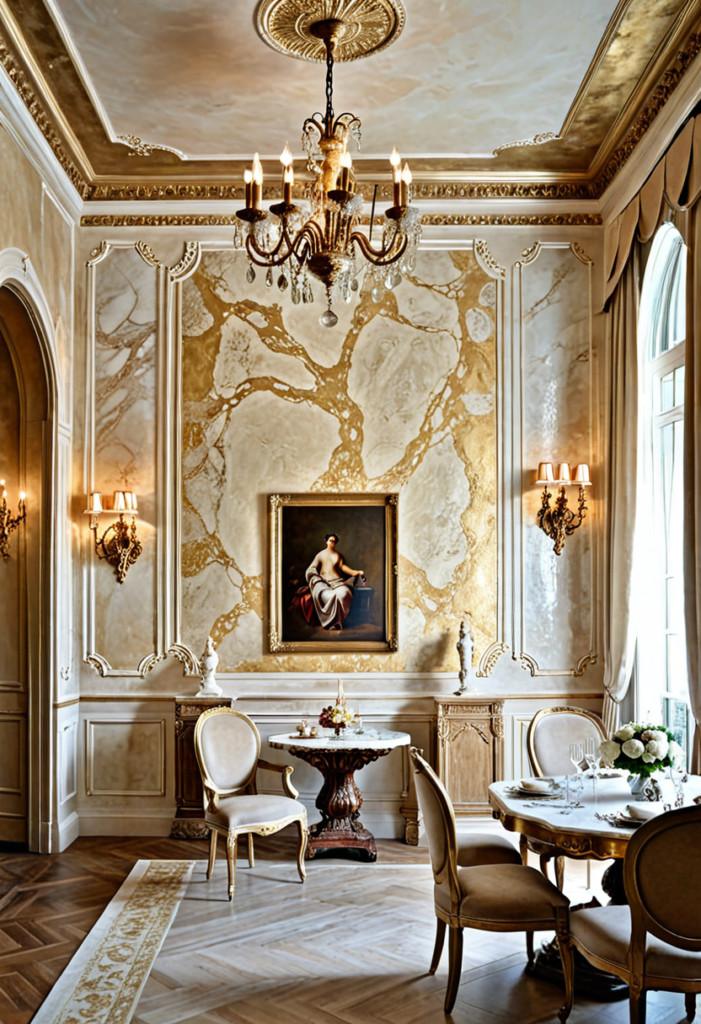
The high-gloss finish of Venetian plaster reflects light beautifully, making it an excellent choice for smaller spaces or rooms with limited natural light. It can add a touch of opulence to any interior, from a powder room to a formal dining area.
Pro Tip: Venetian plaster requires skill to apply correctly. If you’re not confident in your DIY abilities, it’s best to hire a professional to ensure a flawless finish.
5. Industrial-Inspired Concrete Stucco
For a modern, urban look, consider an industrial-inspired concrete stucco finish. This style embraces the raw beauty of exposed concrete, complete with its natural imperfections and variations.
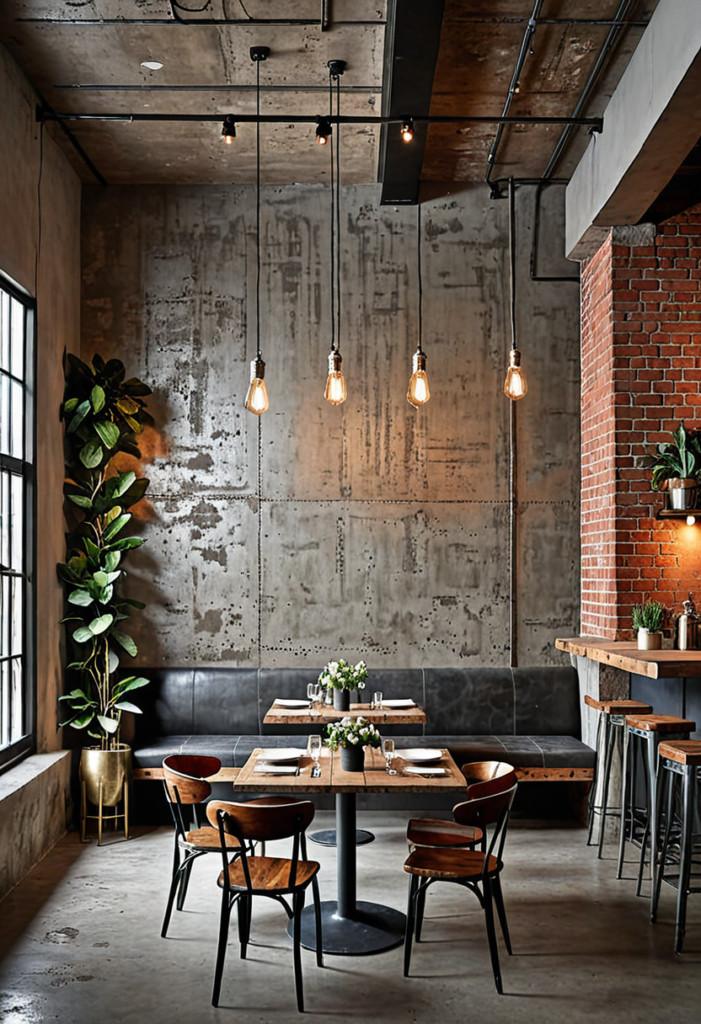
Concrete stucco works exceptionally well in loft-style apartments, modern homes, or commercial spaces. Its neutral grey tones provide a versatile backdrop that can be paired with a wide range of colour schemes and design styles.
Pro Tip: To enhance the industrial look, consider leaving some areas of the wall unfinished or incorporating exposed brick or metal elements.
6. Metallic Stucco
Add a touch of glamour to your interiors with metallic stucco. This finish incorporates metallic pigments into the stucco mix, resulting in a shimmering, light-reflecting surface that can instantly elevate any room.
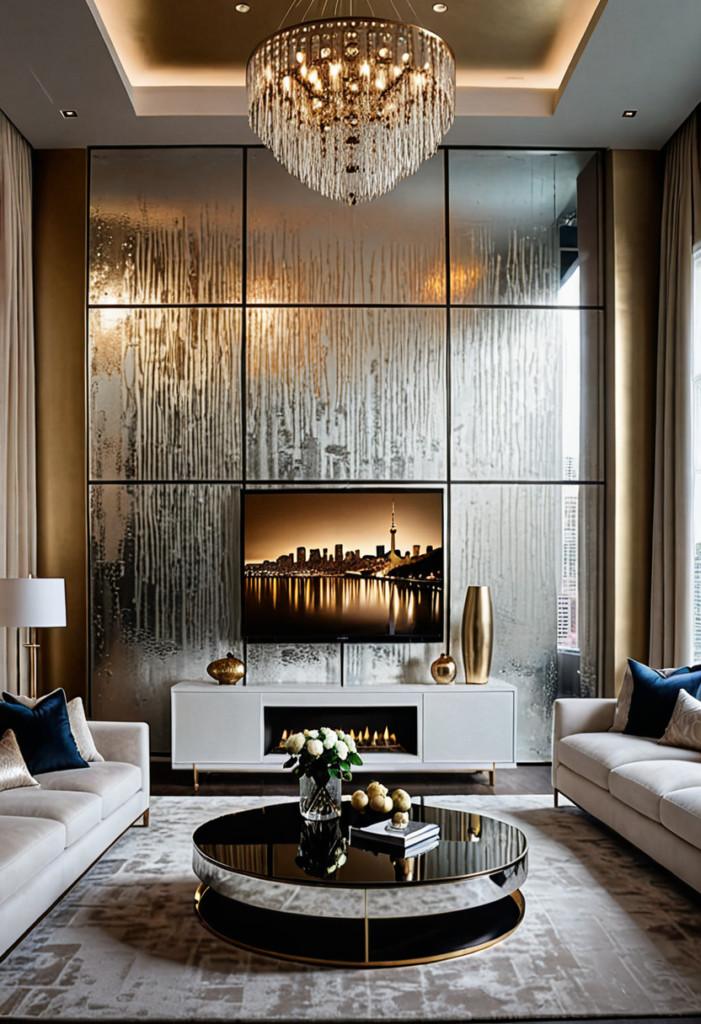
Metallic stucco is particularly effective as an accent wall or in smaller doses, such as on a fireplace surround or in an alcove. It can add a sense of luxury and sophistication to both traditional and contemporary interiors.
Pro Tip: When working with metallic stucco, proper lighting is key. Consider installing strategically placed accent lights to highlight the shimmering effect of the metallic finish.
7. Patterned Stucco
Take your stucco walls to the next level by incorporating patterns or designs. From simple geometric shapes to intricate floral motifs, patterned stucco can turn your walls into true works of art.
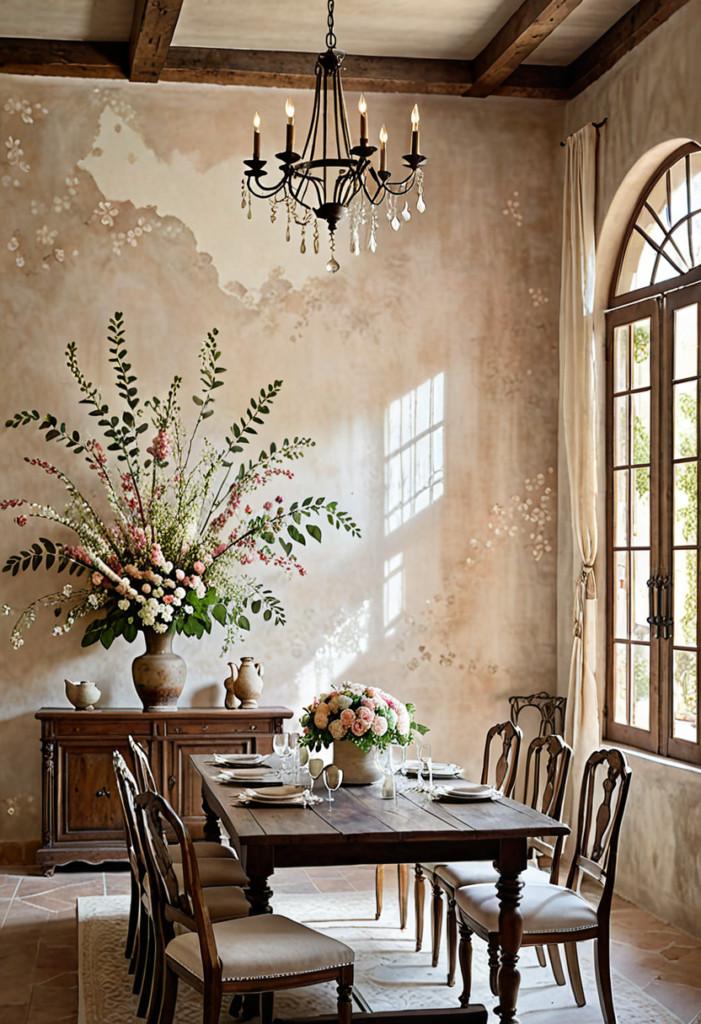
Patterned stucco is an excellent way to add visual interest to a space without the need for additional wall decor. It can be particularly effective in entryways, dining rooms, or as an accent wall in a bedroom or living room.
Pro Tip: Use stencils to create precise patterns, or experiment with freehand designs for a more organic, artisanal look.
8. Ombre Stucco
Bring a touch of drama to your walls with an ombre stucco finish. This technique involves blending two or more colours to create a gradient effect, resulting in a wall that seems to shift and change as light moves across it.
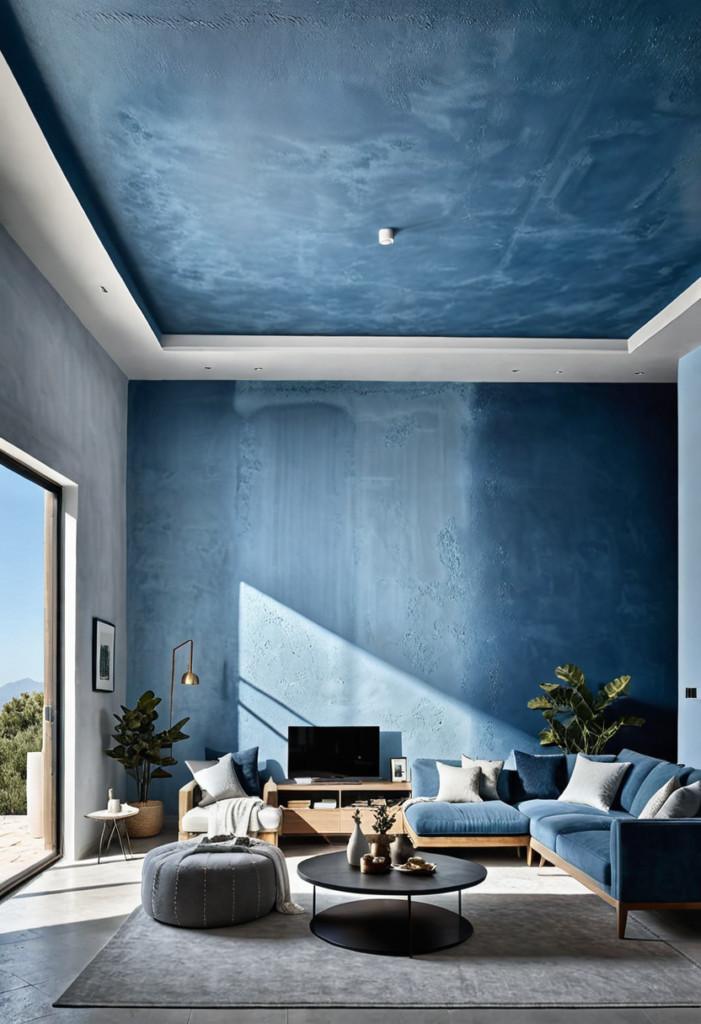
Ombre stucco can be subtle or bold, depending on your colour choices and the gradient’s intensity. It’s an excellent way to add depth and visual interest to a room without overwhelming the space.
Pro Tip: For the best results, choose colours that are adjacent on the colour wheel. This will ensure a smooth, natural-looking transition between shades.
9. Textured White Stucco
White stucco doesn’t have to be boring. By incorporating texture, you can create a visually interesting wall that maintains the clean, fresh look of white while adding depth and character to your space.
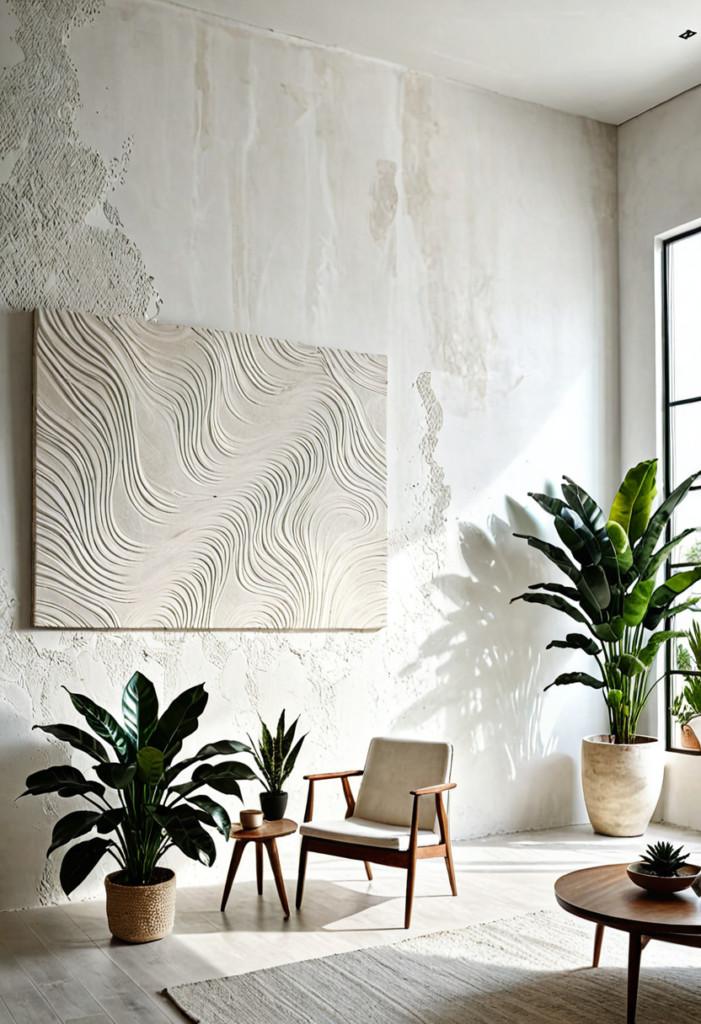
Textured white stucco is incredibly versatile. It can provide a neutral backdrop for colourful artwork and accessories, or it can stand on its own as a statement wall. The play of light and shadow on the textured surface can create a dynamic, ever-changing look throughout the day.
Pro Tip: Experiment with different texturing techniques to find the one that best suits your space. Options range from subtle swirls to more pronounced peaks and valleys.
10. Color-Blocked Stucco
For a bold, modern look, consider colour-blocked stucco walls. This technique involves applying different colors of stucco in geometric shapes or sections, creating a striking visual effect.
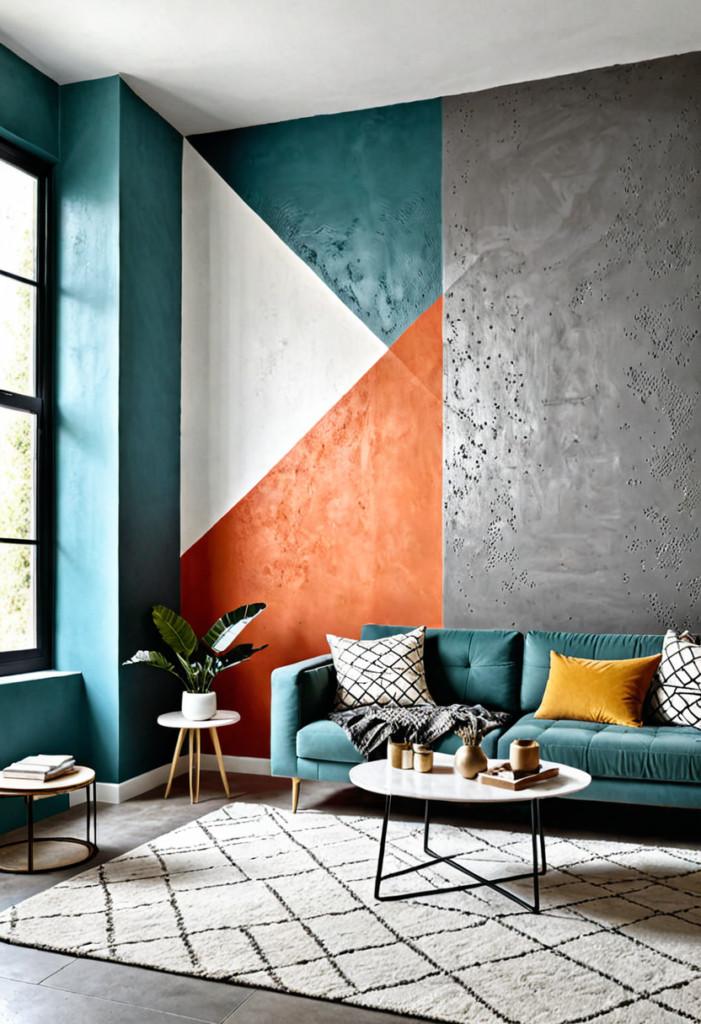
Colour-blocked stucco is an excellent way to define different areas within an open-plan space or to add a pop of colour to an otherwise neutral room. It allows you to incorporate multiple colours without the need for paint or wallpaper.
Pro Tip: Use tape to create clean, crisp lines between colour blocks. Remove the tape while the stucco is still slightly damp for the best results.
11. Distressed Stucco
Embrace the beauty of imperfection with distressed stucco. This finish mimics the look of aged, weathered walls, adding character and a sense of history to your space.
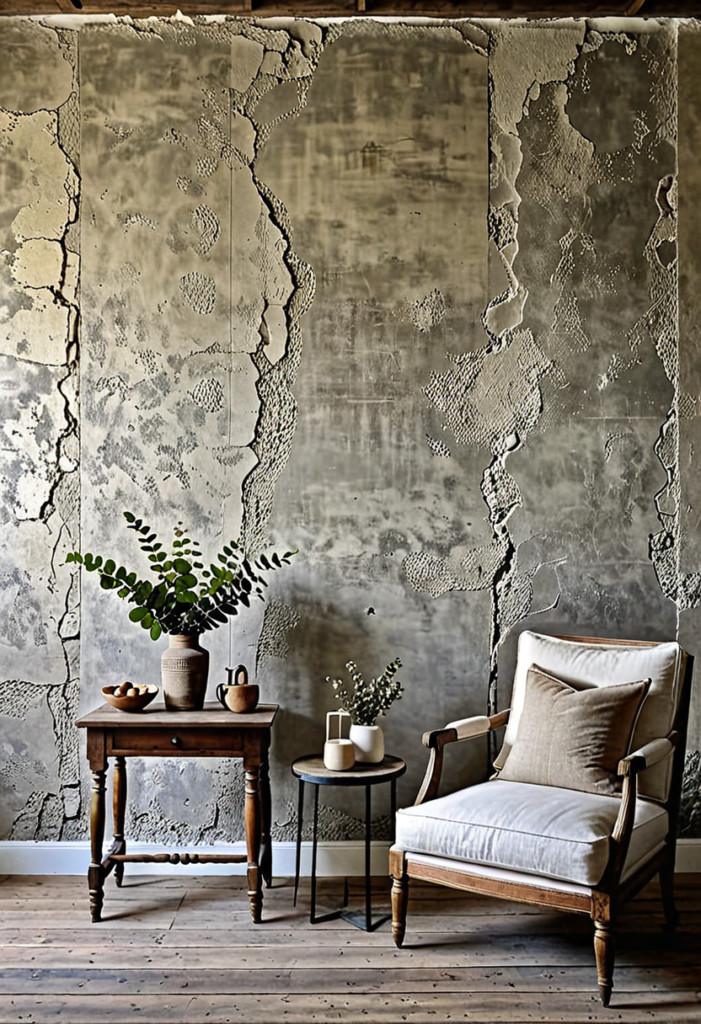
Distressed stucco works particularly well in rustic, farmhouse, or industrial-inspired interiors. It can create a cozy, lived-in feel that’s perfect for creating a welcoming atmosphere in living rooms or bedrooms.
Pro Tip: Achieve a distressed look by applying multiple layers of different coloured stucco and then selectively sanding or scraping away portions to reveal the layers beneath.
12. Stucco with Embedded Objects
Take your stucco walls to the next level by embedding objects directly into the surface. This could include anything from small pebbles or seaglass to larger items like tiles or decorative metal pieces.
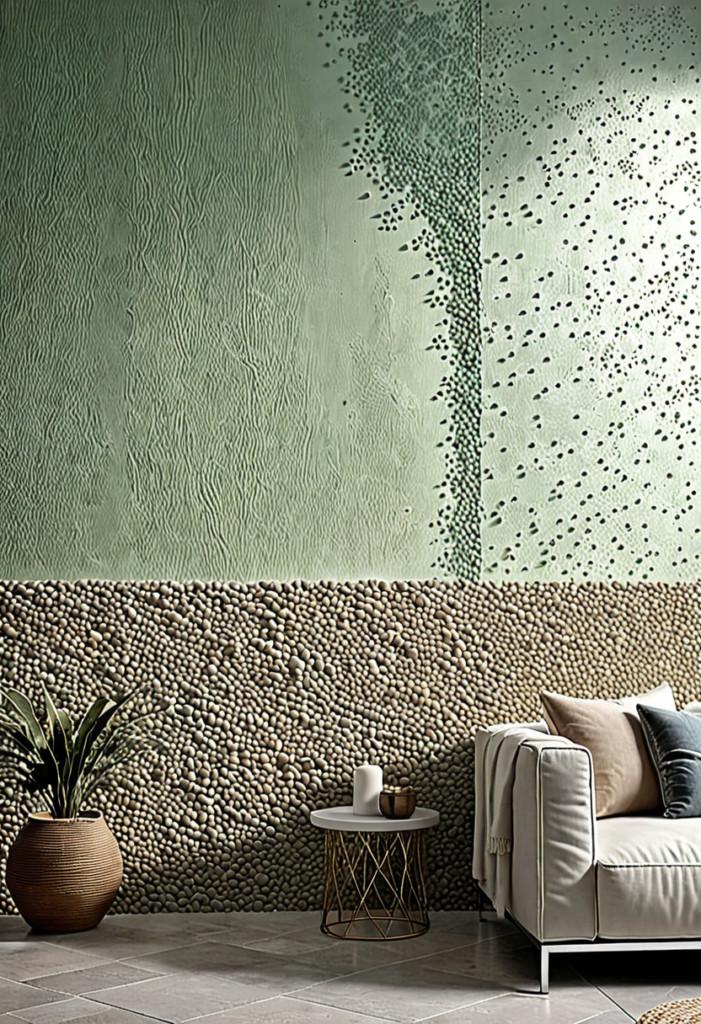
This technique allows for incredible creativity and personalization. You could create a mosaic-like effect, spell out words or phrases, or simply add random objects for a unique, textural finish.
Pro Tip: When embedding objects, ensure they are thoroughly cleaned and dry before pressing them into the wet stucco. This will ensure proper adhesion and longevity.
13. Layered Stucco
Create depth and visual interest by using a layered stucco technique. This involves applying multiple layers of stucco in different colors or textures, and then selectively revealing portions of the underlying layers.
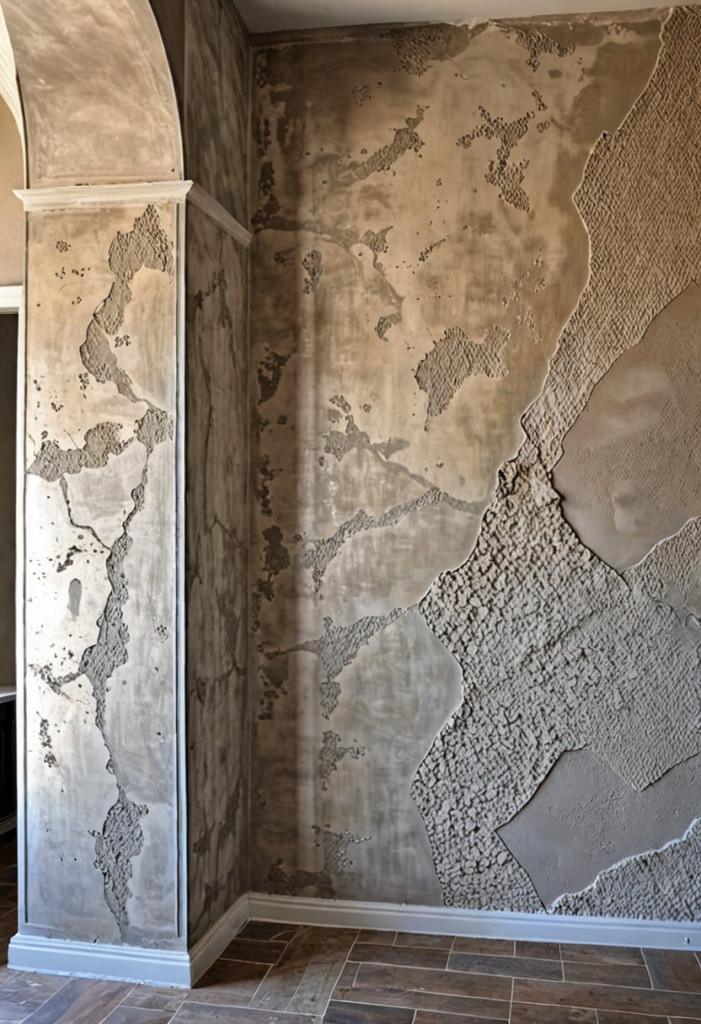
Layered stucco can create a sense of history and complexity on your walls. It’s particularly effective in spaces where you want to add visual interest without the need for additional decor or artwork.
Pro Tip: Use different tools to reveal the underlying layers, such as a trowel, sponge, or even a wire brush, to create varied textures and patterns.
14. Stucco with Integrated Shelving
Combine form and function by integrating shelving directly into your stucco walls. This technique involves creating recessed areas in the wall during the stucco application process, which can then serve as built-in display niches or storage spaces.
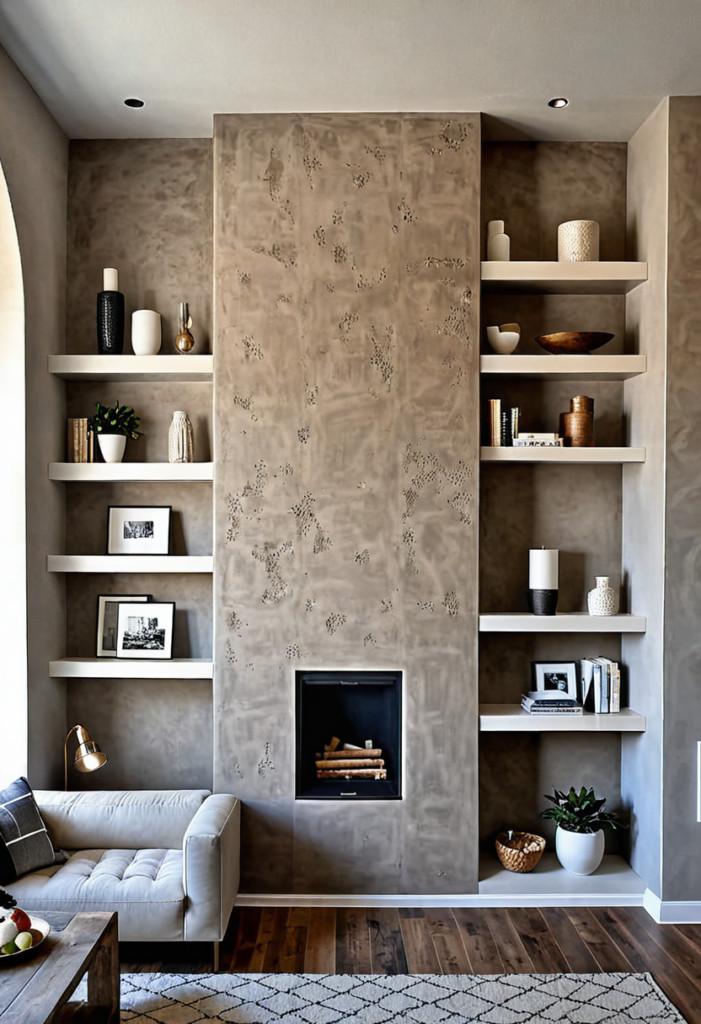
Integrated shelving adds architectural interest to your walls while providing practical storage or display space. It’s an excellent option for bathrooms, kitchens, or living areas where you want to showcase decorative objects or store everyday items.
Pro Tip: Consider adding lighting to your integrated shelves to create a dramatic effect and highlight displayed items.
15. Stucco with Relief Work
Add a touch of old-world elegance to your interiors with stucco relief work. This technique involves creating raised designs or patterns on the wall surface, ranging from simple geometric shapes to intricate floral or figurative motifs.
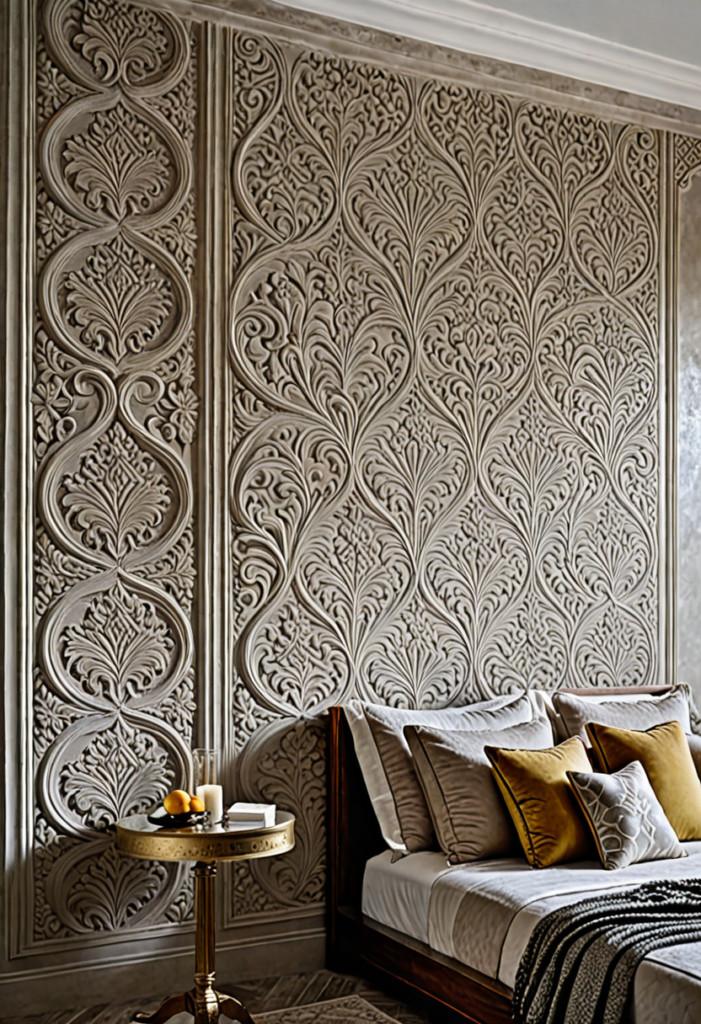
Relief work can add a sense of luxury and craftsmanship to any space. It’s particularly effective in formal living rooms, and dining rooms, or as an accent in entryways or master bedrooms.
Pro Tip: For complex relief designs, consider using moulds or pre-cast elements that can be attached to the wall and then blended into the surrounding stucco for a seamless look.
16. Stucco with Inlaid Materials
Create a truly unique wall finish by inlaying materials directly into your stucco. This could include anything from strips of wood or metal to pieces of coloured glass or stone.
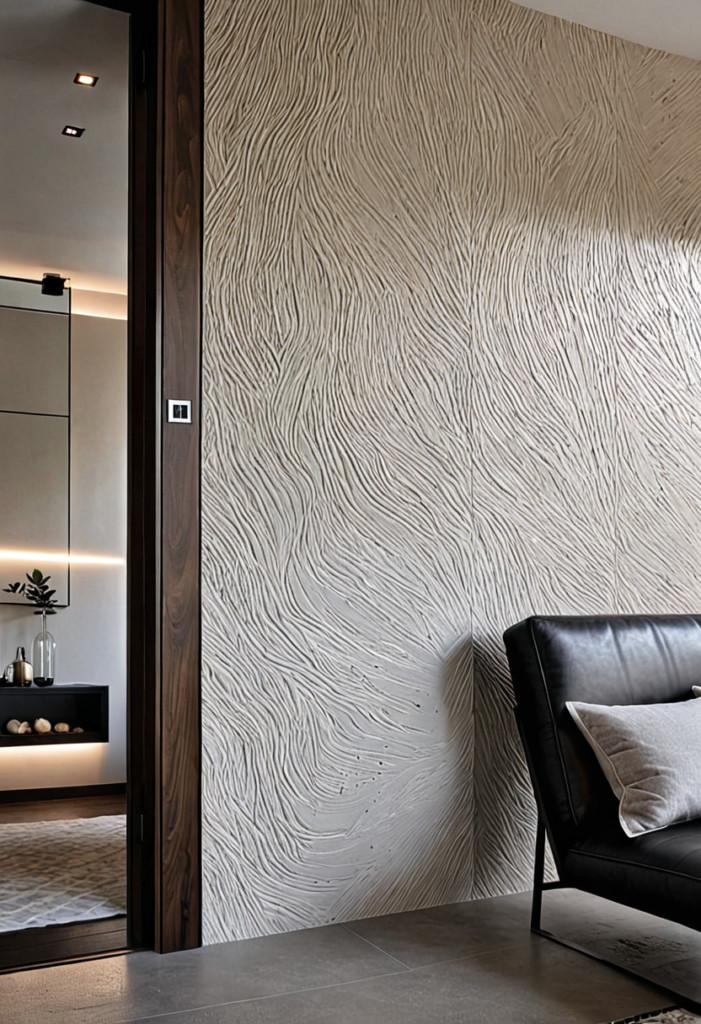
Inlaid materials can add colour, texture, and visual interest to your stucco walls. This technique allows for endless creativity and can be tailored to complement any interior design style.
Pro Tip: When inlaying materials, ensure they are securely attached to the wall surface before applying the stucco. This will prevent shifting or settling over time.
17. Stucco with Faux Finish
Combine the textural appeal of stucco with the versatility of faux finishing techniques to create walls that mimic the look of other materials. Popular options include faux brick, stone, or even leather.
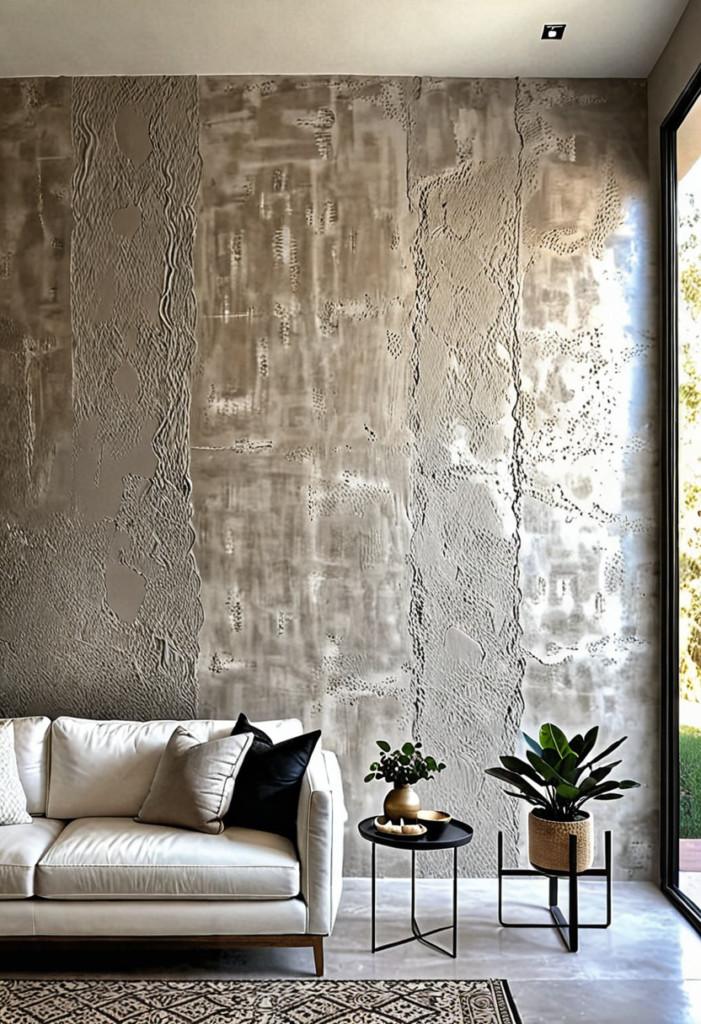
Faux finishes can add depth and character to your walls while maintaining the practical benefits of stucco. This technique is an excellent way to achieve a high-end look without the cost or complexity of installing actual brick or stone.
Pro Tip: Research different faux finishing techniques and practice on a small area before tackling an entire wall. Many faux finishes require multiple steps and specialized tools to achieve a realistic look.
18. Stucco with Exposed Edges
For a modern, deconstructed look, consider leaving the edges of your stucco walls exposed. This technique involves applying stucco to only a portion of the wall, leaving the underlying surface (often drywall or concrete) visible around the edges.
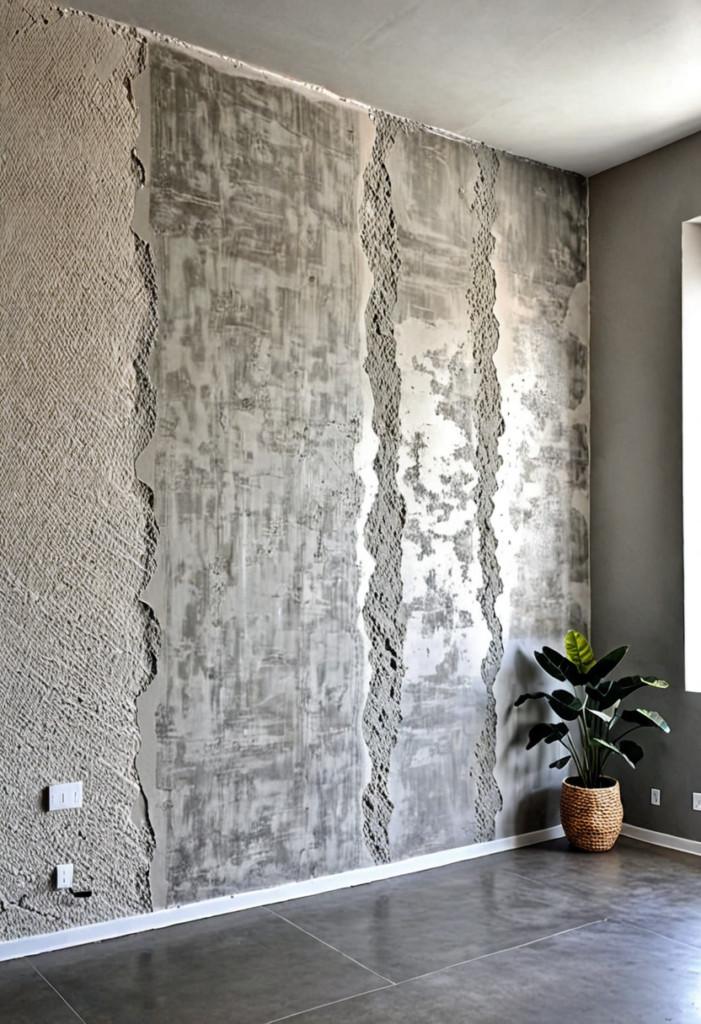
Exposed edge stucco creates a striking visual effect that works well in contemporary or industrial-inspired interiors. It can add depth and interest to your walls while maintaining a sleek, minimalist aesthetic.
Pro Tip: Use painter’s tape to create clean, straight edges where the stucco meets the exposed wall. Remove the tape while the stucco is still slightly damp for the best results.
19. Stucco with Integrated Art
Turn your walls into true works of art by incorporating artistic elements directly into the stucco finish. This could involve creating murals or abstract designs using colored stucco, or embedding decorative elements like tiles or mosaics.
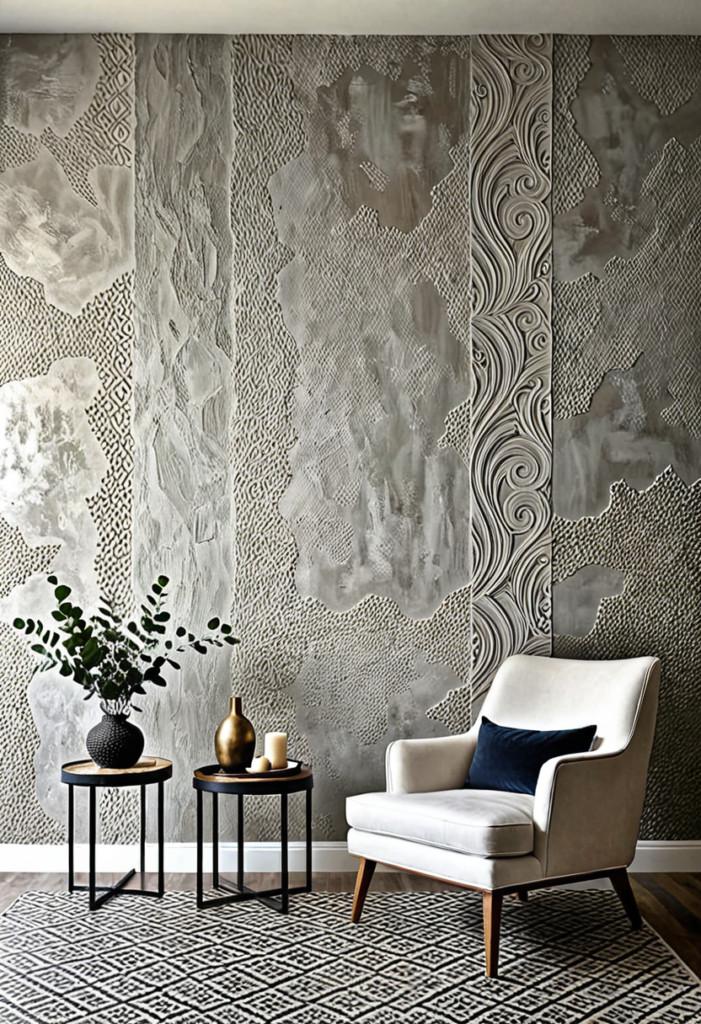
Integrated art stucco allows for incredible creativity and personalization. It’s an excellent way to create a focal point in a room or to express your personal style through your walls.
Pro Tip: If you’re not confident in your artistic abilities, consider working with a professional artist or muralist who has experience with stucco techniques.
20. Eco-Friendly Natural Stucco
Those concerned about environmental impact should consider using natural, eco-friendly stucco materials. These can include lime-based stuccos or those made with natural pigments and aggregates.
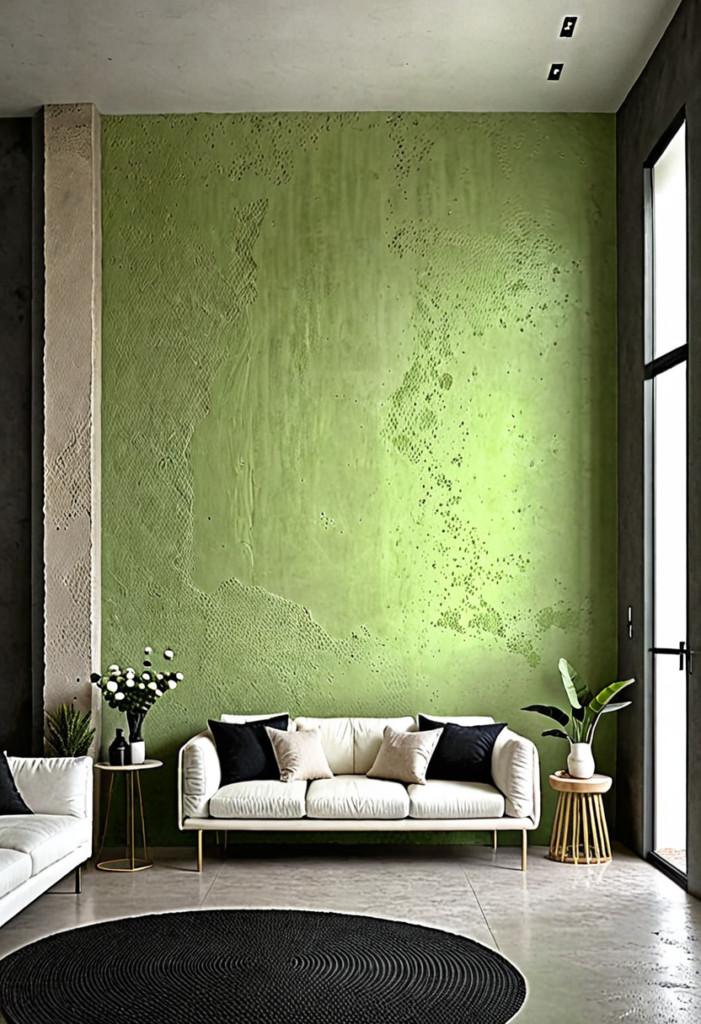
Natural stuccos not only have a lower environmental impact but can also contribute to better indoor air quality. They often have a unique, organic appearance that works well in eco-conscious or nature-inspired interiors.
Pro Tip: Research different natural stucco options and their specific application requirements. Some may require special preparation or finishing techniques to ensure durability and longevity.
Comparison Table: Stucco Finishes
| Finish Type | Texture | Difficulty | Best For | Maintenance |
|---|---|---|---|---|
| Smooth | Low | Medium | Modern, minimalist interiors | Low |
| Rustic | High | Medium | Mediterranean, rustic styles | Medium |
| Color-Washed | Medium | High | Elegant, traditional spaces | Low |
| Venetian Plaster | Low | Very High | Luxurious, formal areas | Medium |
| Concrete | Medium | Medium | Industrial, modern styles | Low |
| Metallic | Low | High | Glamorous, contemporary spaces | Medium |
| Patterned | Varies | High | Accent walls, statement areas | Medium |
| Ombre | Low | High | Modern, artistic interiors | Low |
| Distressed | High | Medium | Rustic, farmhouse styles | Low |
| Eco-Friendly | Varies | Medium | Nature-inspired, sustainable homes | Low |
Frequently Asked Questions
- Is stucco suitable for all interior spaces?
While stucco can be used in most interior spaces, it’s important to consider factors like humidity and wear. Bathrooms and kitchens may require special sealants to protect against moisture. - Can I apply stucco over existing walls?
In most cases, yes. However, the existing surface must be properly prepared to ensure good adhesion. Consult with a professional to determine the best approach for your specific situation. - How long does interior stucco last?
When properly applied and maintained, interior stucco can last for decades. Its durability is one of the reasons it’s become increasingly popular for indoor use. - Can I paint over the stucco if I want to change the colour later?
Yes, stucco can be painted. However, it’s important to use the right type of paint and prepare the surface properly to ensure good adhesion and preserve the texture of the stucco. - Is stucco more expensive than regular paint or wallpaper?
Generally, stucco is more expensive upfront due to the materials and labour involved. However, its durability and unique aesthetic can make it a worthwhile investment in the long run.
Conclusion
Interior stucco walls offer a world of design possibilities, from sleek and modern to rustic and charming. Whether you’re looking to add texture, create a focal point, or completely transform your space, there’s a stucco technique that can help you achieve your vision. Remember, while some stucco applications can be DIY projects, many require skill and experience to execute properly. Don’t hesitate to consult with or hire a professional to ensure the best results for your interior stucco project.
By incorporating these ideas into your home, you can create truly unique and personalized spaces that reflect your style and stand the test of time. So go ahead, embrace the versatility of stucco, and let your walls become the canvas for your interior design dreams.
“Texture is the most enduring and ubiquitous underpinning of form… Texture makes up the tactile world we live in, and it’s also the springboard to our imagination.” – Massimo Vignelli
With these 20 innovative stucco interior wall ideas, you’re well-equipped to transform your living spaces into unique, textured havens that reflect your personal style and creativity. Whether you opt for a subtle, smooth finish or a bold, patterned statement wall, stucco offers endless possibilities for adding depth, character, and visual interest to your home. Happy designing!
